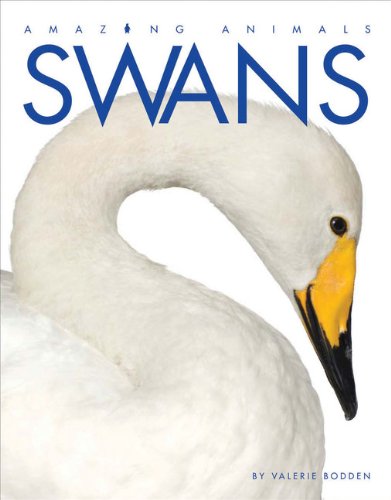-
Amazing Animals: Leopards
Kate Riggs
Paperback (Creative Paperbacks, Aug. 29, 2012)This popular series continues traveling the planet to study alligators, bats, and other fascinating animals. Beautiful photos are paired with accessible text to examine the featured creature's appearance, habitat, behaviors, and life cycle. L
L
-
Komodo Dragons
Valerie Bodden
Library Binding (Creative Educ, Jan. 1, 2013)"A basic exploration of the appearance, behavior, and habitat of Komodo dragons, Earth's heaviest lizards. Also included is a story from folklore explaining why Indonesians respect Komodo dragons"--Provided by publisher. L
L
-
Giraffes
Valerie Bodden
Paperback (Creative Paperbacks, Feb. 18, 2020)From winged bats to furry wolves, and from leaping dolphins to stalking lions, the world of animals is wonderfully diverse. This popular series travels the planet to study these and other fascinating mammals, birds, reptiles, fish, and invertebrates. Beautiful photos are paired with STEM-appropriate text to examine the featured creature's appearance, habitat, behaviors, and life cycle. Each reissued title also presents a folk story that people have used to help explain the animal's appearance or behavior. This revised edition surveys key aspects of giraffes, describing the towering mammals' appearance, behaviors, and habitats. A folk tale explains why these creatures have long necks. P
P
-
Amazing Animals: Vultures
Kate Riggs
Paperback (Creative Paperbacks, Sept. 15, 2015)A basic exploration of the appearance, behavior, and habitat of vultures, the carrion-eating birds of prey. Also included is a story from folklore explaining why vultures are bald. N
N
-
Crocodiles
Valerie Bodden
Hardcover (Creative Education, Jan. 1, 2020)Surveys key aspects of crocodiles, describing their appearance, behaviors, and habitats. Also included is a story from folklore explaining why crocodiles have rough skin. L
L
-
Hippopotamuses
Christina Wilsdon
Paperback (Gareth Stevens Pub Learning library, July 1, 2009)Even though a hippopotamus might look silly, meeting one in the wild is no laughing matter. Hippos are fierce and powerful creatures who are quick to protect themselves. Learn all about these giant animalswhat they eat, why they spend so much time in the water, and how they raise their young. P
P
-
Whose Big Butt?: Our Amazing Animals
Anne Cowell
Paperback (CreateSpace Independent Publishing Platform, Dec. 1, 2013)Encourage children to appreciate and respect our amazing animals. This book is sure to delight children with its flowing rhyme, colourful illustrations and information on some of Africa's beautiful wild animals. One fun repetitive verse gets the kids 'hooked' onto the theme: Whose Big Butt is that I see? Whose Big Butt in front of me? Visual and written clues get the child thinking about the animal that they are about to see more clearly on the next page, where the animal replies about what it eats to get such a 'Big Butt'. To liven things up further, within each clue a different expression for an animal's 'butt' is also used; such as 'behind', 'bum', 'rear end'. The series of Our Amazing Animals is a great collection for children! See the other books in this series. S
S
-
Amazing Animals: Swans
Valerie Bodden
Paperback (Creative Paperbacks, Feb. 2, 2011)None B
B



